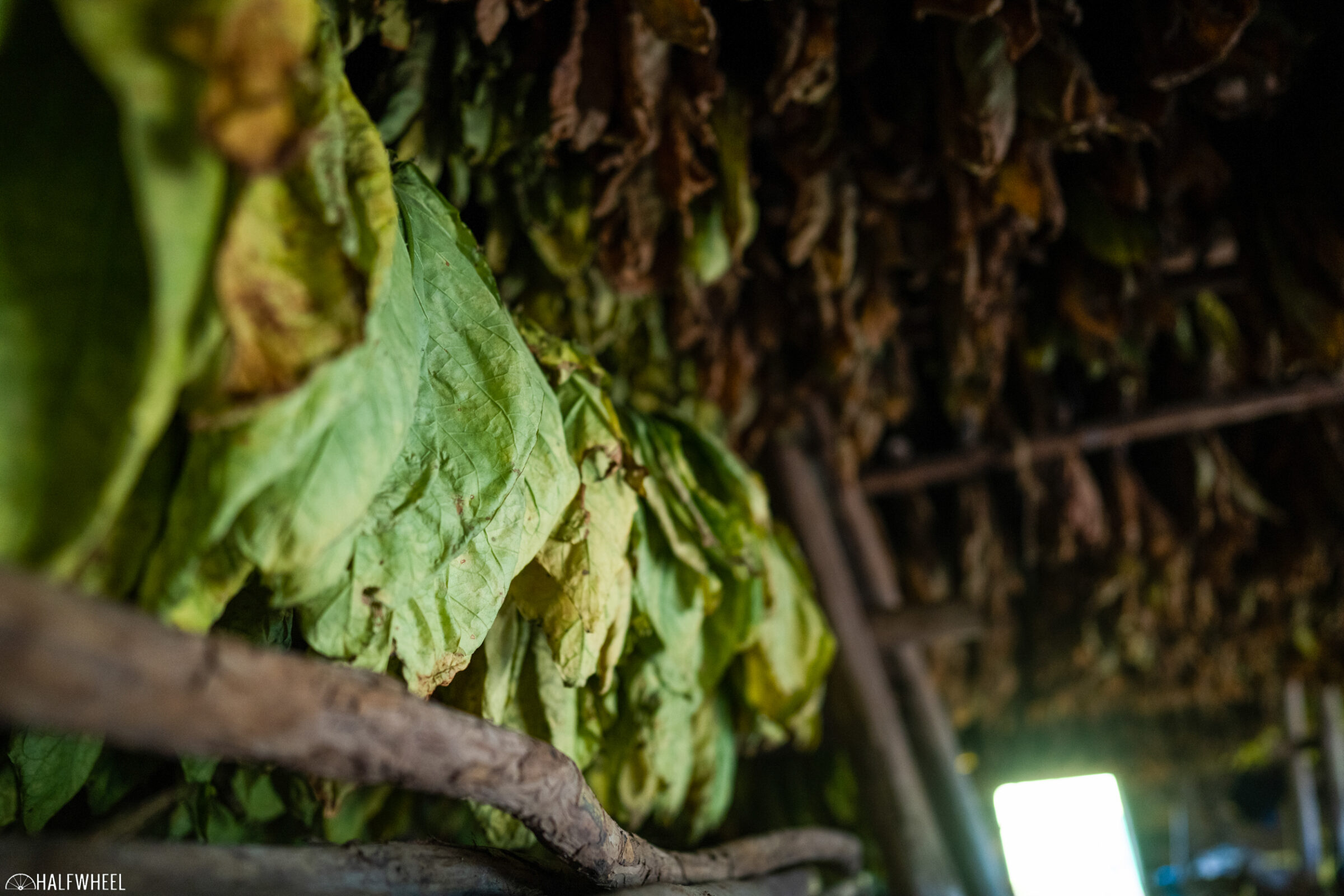Two days into my most recent trip to Cuba, my schedule has already become somewhat repetitive: get up early after sleeping for less than four hours, try and get some work done while scarfing down breakfast, pack up my equipment and get moving.
However, things were a bit different on Tuesday. Instead of rushing over to the convention center in Havana to cover seminars or speakers—that will be pretty much all I do tomorrow—I was taking a trip to Pinar del Rio, the legendary tobacco-growing area which is located in the westernmost region of Cuba.
I had not visited the Cuban tobacco fields in years—our bus broke down on the way last year, leaving us stranded for a bit and killing any chance of actually making it there—but I was extremely interested to see how the impact of recent major weather incidents had affected the country’s infrastructure and ability to produce tobacco. Most notably, Hurricane Ian dealt massive damage to the area when it hit the growing region in September 2022.
In fact, earlier this year, a report in Granma—a state-run newspaper—indicated that Cuba officially reduced its targeted planting area in Pinar del Río by roughly 21 percent. As a result, Grupo Empresarial Tabacuba—the state-run company tasked with managing the production of tobacco and cigars—has reduced its targeted goals for the 2023-2024 harvest from the planned 12,905 hectares to 10,200.
As we reported at the time, it was estimated that Ian damaged 90 percent of the curing barns in Pinar del Río. Granma reports that 4,776 have been rebuilt and another 620 are in the process of being completed.
While the main group of journalists were heading to visit the farms of Vegas Robaina, the people I was staying with decided to go to a different farm in the hopes that we could see a bit more of an authentic picture of how things were going. Specifically, we decided to visit the San Juan y Martínez farms.
Now, contrary to what you may think, a bubblegum pink 1952 Chevrolet with nonexistent shocks and a suspect passenger-side door that tends to open on its own at random times is not the best mode of transportation to take when driving down roads literally covered in potholes, but it beats walking. Unfortunately, there were more potholes on the road than pavement at various points, so the maximum speed of 80 km/h was rarely achieved for any extended length of time.
With that said, the sun was out, the windows were down, and the countryside was beautiful, albeit in a rural, undeveloped kind of way. We passed a number of different people using various modes of transportation, including cars, scooters, horses pulling carts and their own two feet.
About 90 minutes into our drive, we stopped at a combination rest stop/restaurant/bar where locals were hawking their wares and selling food. There was also a man who was posing with a couple of bulls for tourists, although I did not see anyone actually take advantage of that while I was there.
Two hours later—and after stopping to ask directions multiple times—we finally arrived at one of the San Juan y Martínez farms. From a distance, there seemed to be few noticeable issues when it came to either the crops or the barns, and as we walked down the creaky plank way, that observation did not change.
In fact, there had obviously been different crops of tobacco planted at different times, as some of them were noticeably smaller and less developed.
Full disclosure: unlike my father, I am far from an expert when it comes to growing tobacco—or any sort of plant, really—but the tobacco plants I saw in the fields looked extremely healthy, with large leaves that had very little overt damage. Having said that, the barns were obviously recently painted, and a couple of the structures that I wandered into were not being used, at least not at the time I was there.
After about two hours, it was time for the three-hour drive back to Havana, where I immediately began trying to catch up on work before the last event of the night. Phoenicia T.A.A. Cyprus Ltd. and S.T. Dupont joint-hosted a party at the Grand Hotel Packard, an amazing event that included a live performance by The Managers, which just happens to be the rock and roll band of Alain Crevet, ceo of S.T. Dupont.
When attendees entered the party, they were given a pack of cigars that included the Por Larrañaga Fénix Edición Regional Phoenicia, a 7 1/4 x 50 Churchill extra vitola that was created to commemorate the 15th anniversary of the partnership between Habanos S.A. and Phoenicia T.A.A. Cyprus Ltd., which is the distributor of Cuban cigars in Cyprus and much of the Middle East.
It was then time to get back to the house and try to get a bit of sleep before the next day’s seminars and dinner event celebrating the 50th anniversary of Quai D’Orsay brand.













